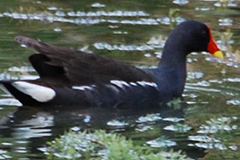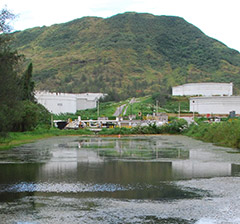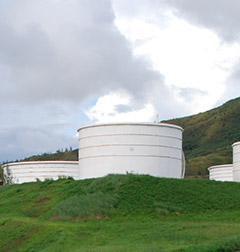Pacific Southwest, Region 9
Serving: Arizona, California, Hawaii, Nevada, Pacific Islands, Tribal Nations
Protecting Endangered Moorhens on Guam
The Mariana common moorhen, a duck-sized aquatic bird found only on Guam, Saipan, and two smaller islands in the Northern Mariana Islands, isn’t common. In fact, it’s endangered, with less than 300 birds remaining in their freshwater wetland habitats. On Guam, EPA partnered with the U.S. Fish and Wildlife Service to help a petroleum tank farm, Tristar Terminals Guam, develop a voluntary Moorhen Habitat Management Plan for two ponds on its property.

“EPA appreciates Tristar’s voluntary actions as good environmental stewards,” said Jared Blumenfeld, EPA’s Regional Administrator for the Pacific Southwest. “Their plan ensures that former oily waste treatment ponds will be a vibrant habitat where the rare moorhens can thrive.”
For more than 25 years, EPA has been working with Guam EPA, and two former terminal owners: the Guam Oil Refining Company (GORCO), and Shell Guam, Inc. to protect man-made ponds near the tank farm that proved to be valuable habitat. The ponds were built by GORCO in 1979 to treat petroleum wastes. The moorhens were first attracted to the ponds when the treatment unit was closed in 1983. Today, the former treatment ponds, as well as other surface impoundments on the facility, support a population of about 30 moorhens – roughly 10% of the world’s total.

Tristar, current owner of the petroleum terminal, worked with EPA and the U.S. Fish & Wildlife Service to create the new voluntary habitat management plan. Under the plan, Tristar will maintain the water level in the ponds and vegetation around the ponds to provide shelter and nesting material for the moorhens. They will also survey the moorhen population once every three to five years, and control animal predators in and around the ponds, if necessary.
Maintaining open, freshwater habitat is key to the moorhen’s survival on Guam. If the ponds dry up, which can happen during the dry season, they are forced out. The open water also helps reduce the growth of phragmites, an invasive grass which can take over the ponds, eliminating open water.
In 2004, moorhen counts indicated that there were approximately 90 Mariana common moorhen on Guam, 154 on Saipan, 41 on Tinian, and just two individuals on Rota. A 2007 count showed 33 moorhens at the Tristar facility alone.

The Mariana common moorhen (Gallinula chloropus guami), known locally as ‘pulattat,’ is one of the few endemic bird species left on Guam. Nearly all others were wiped out by the non-native brown tree snake, which eats bird eggs and young. Thankfully for the moorhen, the snake is not as common in wetlands as it is in trees.
Elsewhere on Guam, the Mariana swiftlet is still found in caves where brown tree snakes can't go, and a few Micronesian starlings survive at Andersen Air Force Base on the north end of Guam, where the tree snakes are routinely trapped. The yellow bittern, which occurs all over Southeast Asia, also survives on Guam.
